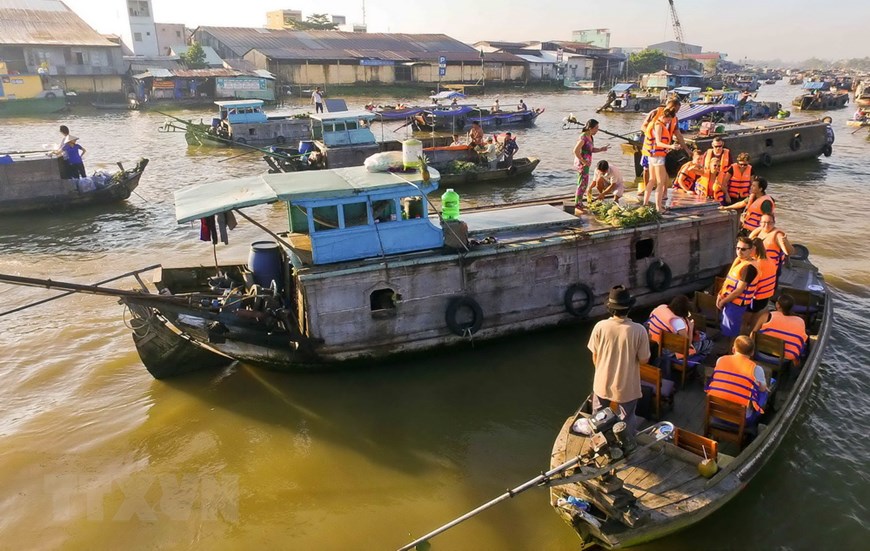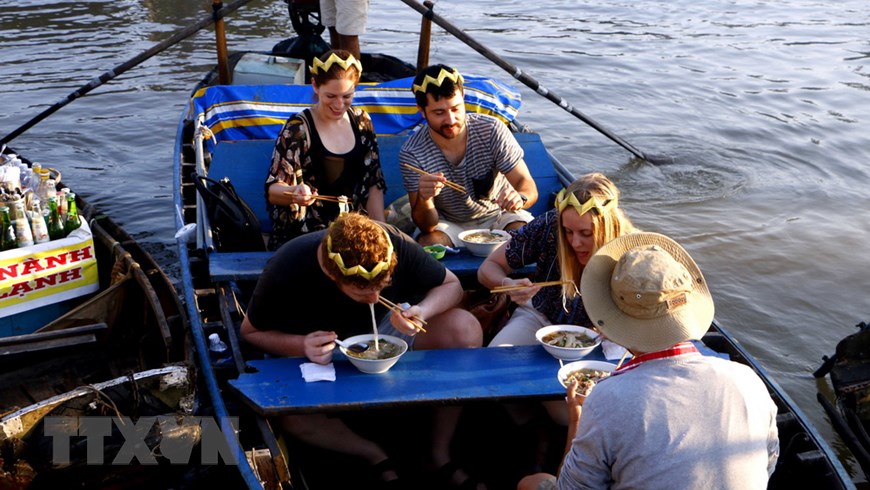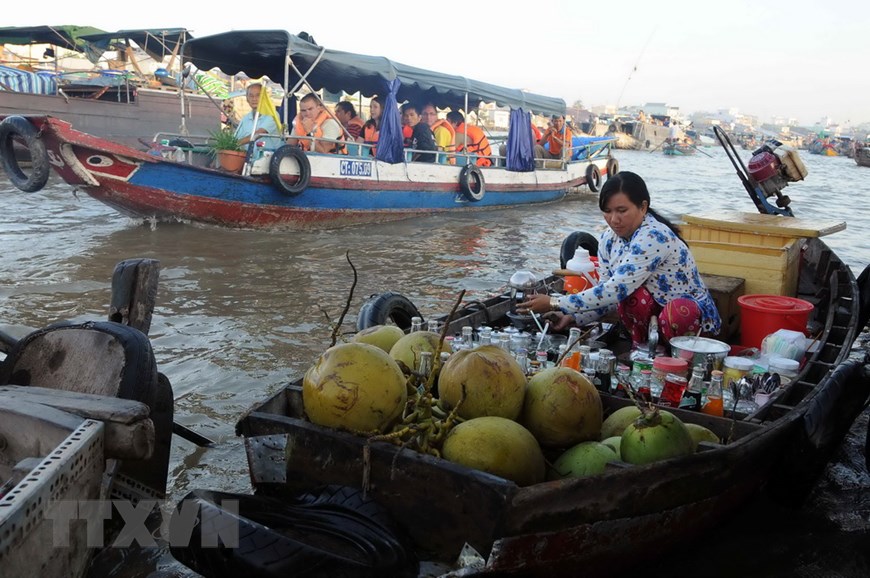Cai Rang floating market has long been an enticing tourism feature of the Mekong Delta city of Can Tho. UK tourism magazine Rough Guide has ranked it among the top ten most impressive markets worldwide and the top five most interesting markets in Asia.
A unique type of market in river basin
Cai Rang floating market is located on Cai Rang River, about 6km away from the heart of Can Tho city. To reach the market by waterway, it takes about 30 minutes from Ninh Kieu wharf in the district of the same name.
UK tourism magazine Rough Guide has ranked it among the top ten most impressive markets worldwide and the top five most interesting markets in Asia.
According to the Can Tho institute of social and economic development, the market was originally located at the intersection of four rivers – Can Tho, Dau Sau, Cai Son, and Cai Rang Be, and was adjacent to Cai Rang market on the shore. In the 1990s, due to waterway traffic obstacles, it was moved over 1km away from the location.

Nowadays, the floating market lies on a large water surface downstream of the Can Tho River, about 600m from Cai Rang Bridge. As part of the Hau river – Xa No canal waterway, it enjoys favourable conditions for trade with neighbouring localities and with the entire Mekong Delta area, thus becoming the biggest of its kind in the area.
The market opens every day from dawn to about 8 to 9 am, with wholesale transactions only.

It offers diverse and plentiful goods, with the most abundant being farm produce such as fruits, vegetables, and ornamental trees, followed by handicrafts-household appliances, and food. Small boats serving as floating convenient stores and restaurants for locals and visitors create a lovely feature of the market. Each seller erects a long stick on his boats to hang representatives of the products he offers so that buyers can see from distance, facilitating trade.

At the market, there are no sales on credit or bargains. Quick transactions, mostly based on trust and done orally, are preferred as the market opens for a very short time per day. These have constituted a “floating market culture”.
Currently, on a daily basis, the market sees between 300 and 350 boats trading, with additional services offered for merchants such as petrol, motor maintenance, and tailoring.
Preserving and promoting tourism at Cai Rang floating market
The market, a tourist magnet of the city, was recognised as a national intangible cultural heritage in 2016. However, it is yet to be developed on par with its tourism potential and is facing the risk of deterioration.

At an October workshop on preserving the special market held by the Ministry of Culture, Sports and Tourism in Can Tho, most of the participants agreed on a need to harmonise the benefits of merchants, farmers, tourists and state management agencies involved.
Nguyen Khanh Tung, Director of the Can Tho Department of Culture, Sports and Tourism, said since 2016, the city has implemented a series of concerted measures, like loan support, price subsidisation, and clean water supply, along with garbage collection to help the merchants improve their livelihoods and boost incomes.
According to him, priorities have been given to the promotion of indigenous cultural activities at the market, particularly the practice of southern folk music “Don ca tai tu”. The pilot of a Can Tho tourism route in association with Cai Rang floating market at night has also been considered.
As for farmers, specifically those supplying farm produce for merchants at the market, the city has directed the building of related wholesale markets and cooperatives offering clean products.

Ngo Anh Tin, Director of the Can Tho Department of Science and Technology, stressed the need to help farmers apply advanced technologies in their production, especially in after-harvest process, to cut losses and offer products of better quality.
Duong Tan Hien, Vice Chairman of the municipal People’s Committee, said a project on preserving and developing the Cai Rang floating market has been carried out.
Consisting of two phases, 2016-2018 and 2019-2020, the project was set to build key facilities like a float system to facilitate traffic, stopovers, and riverside floating restaurants.
The Can Tho river embankment project is moving quickly toward its completion. Its part passing through Cai Rang floating market will be specially designed to suit the operation of the floating market, facilitate the handling of goods, and allow tourists to stand on the shore to enjoy the view./.

